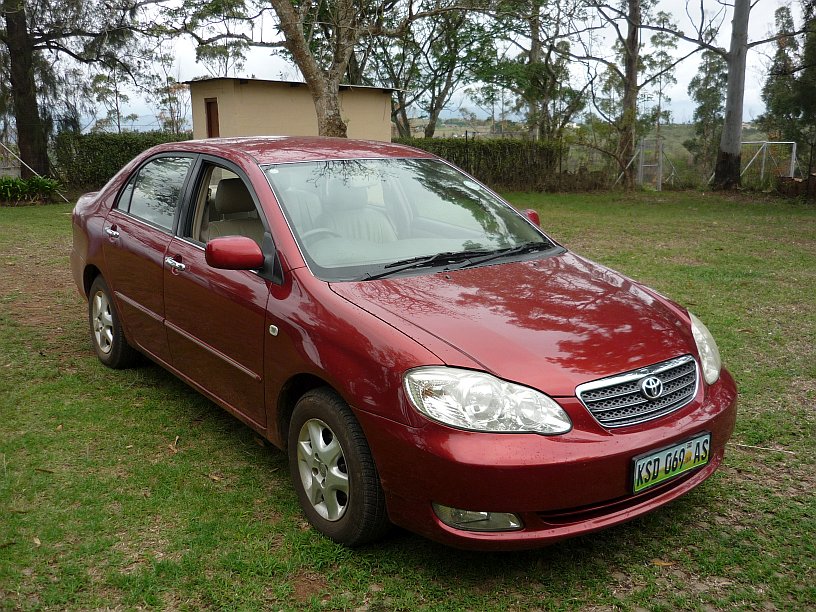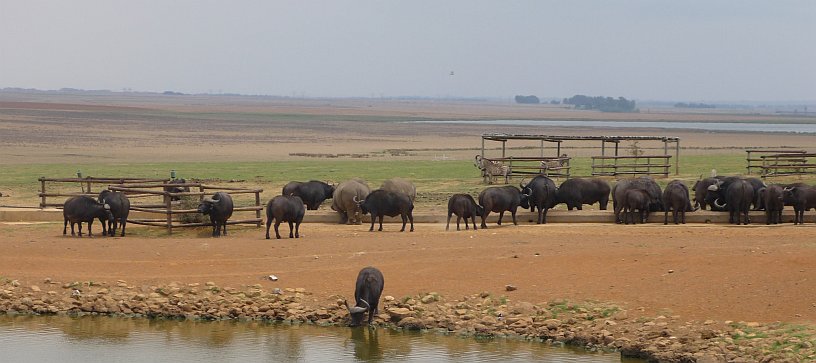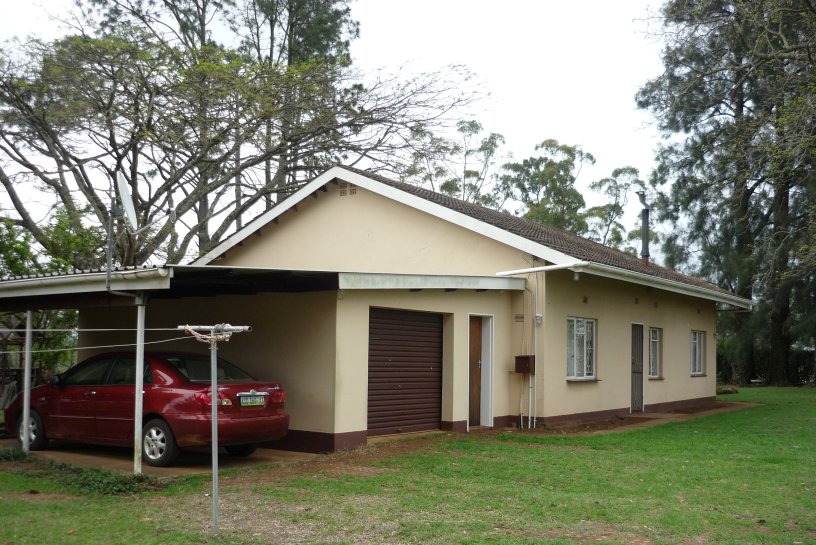We all managed to sleep well, woke up about 8 am, made our own breakfast in the lodge kitchen and obtained some local currency (~R11 (rands) equals $1).

The Toyota Corolla that we are using — note the steering wheel on the right-hand side.
Stavropoulos’ have let us use their Toyota Corolla, which was being stored in the garage at the office, while they are serving at TWR in Benin (West Africa). We loaded our bags into the car for the drive to Swaziland and spent our first rands for snack items at the bakery next to the TWR office before finding our way onto the dual carriageway (freeway).
About half of the road going to Swaziland ais now freeway. Most of the way, including a lot of the two lane roads, the speed limit is 120 kph (75 mph). We usually held our speed to around 100 kph (62 mph), as there are so many pedestrians and really slow vehicles on the roads.
Although all the controls on the Toyota Corolla are the same as on our Toyota Echo, they are on the opposite side of the steering wheel, since the driver sits on the right-hand side of the car. So for several days instead of signaling for a turn, the windscreen (windshield) wipers would go before realizing our mistake!
About half way to Swaziland is a great ‘oasis’ called ALZU Petroport — http://www.alzupetroport.co.za/ — , which has a petrol (gas) station, food court and grocery store. We stopped here for a rest stop and to pick up something for lunch.

View from the ‘loo’ at ALZU! (View while standing in the mens’ room — Virginia says there is a similar view from the sinks in the ladies’ room!). There are rhino, buffalo, zebra and ostrich here.
We fairly quickly cleared immigration twice at the Swaziland border — once to leave South Africa and again to enter Swaziland.
Since we arrived fairly early in the afternoon, we decided to stop at the Ngwenga Glass Factory — http://www.ngwenyaglass.co.sz/ — only a couple miles past the border gate. This is the first time that we have seen the glass factory in full production. The furnaces were fired up, with around 30 people making various glass products and zipping around the factory floor with red hot glass on the end of metal rods. We marveled that no one got burned with all the scurrying past each other in close quarters, nor with no one wearing gloves as they manipulated the metal rods with red hot glass on the end. We spent almost two hours there, mostly watching the various products being made.
We arrived at the TWR missionary compound, Singing Pines, just before sunset and were given the keys to the guest house, Mkhaya Bella (translation — Forest Bell Bush). www.plantbook.co.za/plantindex/138-Mackaya-bella

Front view of the two bedroom Mkhaya Bella — note the clothes drier in the left foreground and the tall pines at the top center and top right of the photo — hence the name Singing Pines (produced by frequent winds) for the compound.
Ingrid brought a main dish of lasagna, plus side dishes, for our supper. Since school is out for a long weekend, their family was busy packing up for a vacation in South Africa.
The Swaziland weather welcomed us with a typical spring lightening storm and accompanying booming thunder just after dark. Fortunately, the power stayed on. The temperatures are much cooler than anticipated — maybe the upper 60s F. We were told last week that it had been in the mid 90s F.
 Toward evening, it cooled off enough that we were getting goosebumps, even inside the house, so we built a fire in the living room fireplace. We did not come to Swaziland (which is supposed to be approaching summer) prepared for such cold nights in October. The temperature was in the 50s F — low 60s F in the house.
Toward evening, it cooled off enough that we were getting goosebumps, even inside the house, so we built a fire in the living room fireplace. We did not come to Swaziland (which is supposed to be approaching summer) prepared for such cold nights in October. The temperature was in the 50s F — low 60s F in the house.






